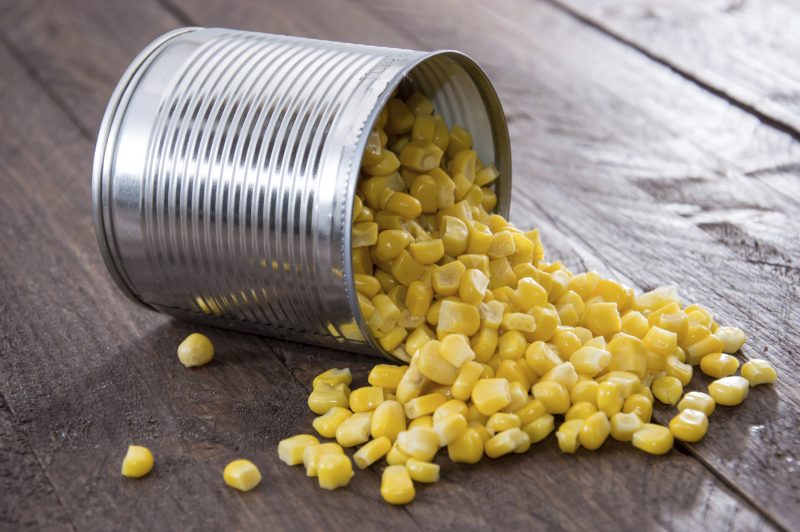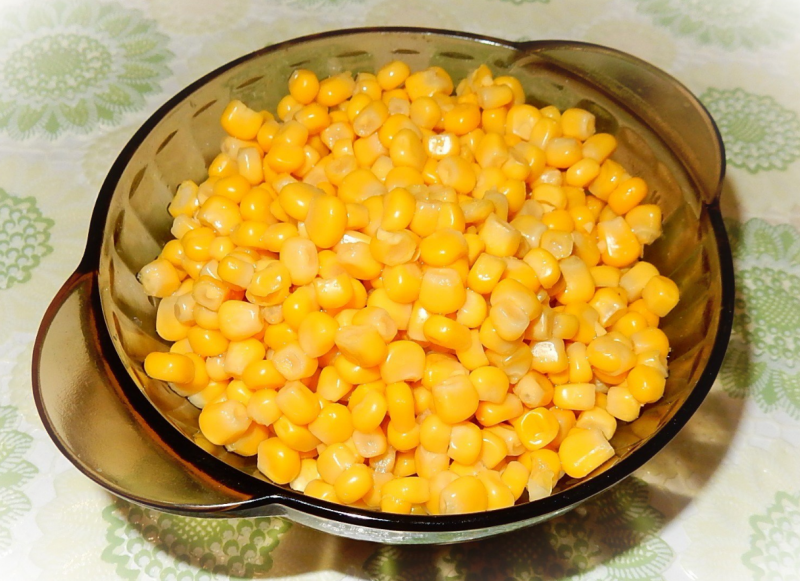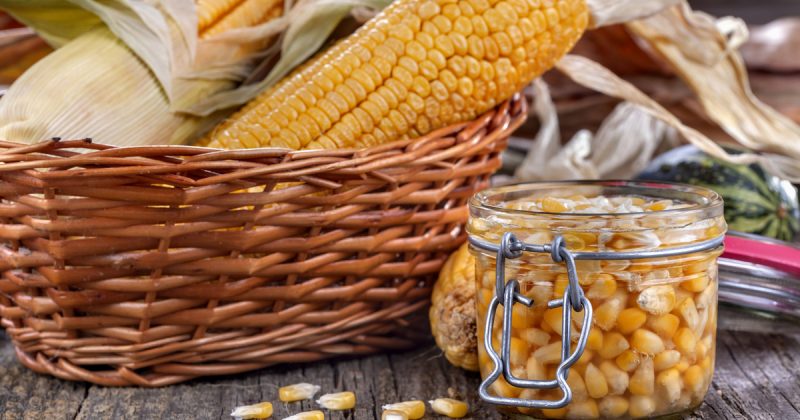Canned corn is a common ingredient in cooking salads, but does it make sense to give preference to it, ignoring fresh cucumbers, herbs or cabbage? Do its grains not lose their properties as a result of heat treatment and long-term storage in a bank? First of all, they ask such questions when making a diet or menu for children. Consider what this product is, the benefits and risks of its use.
Material Content:
How to make canned corn
The technological process of preserving corn is almost completely automated. For its production, only unripe cobs are used, in which the grain has already lost its primary water content, but has not yet gained the rigidity characteristic of ripe cereals. Taste qualities of the finished canned product primarily depend on how well the moment of picking the cobs was chosen. For this reason, corn plantations are checked every few days for optimal maturity.
Cobs are harvested by combine harvesters, and then sent to the cannery. The machine removes the green shell from them, after which the grains are cut with knives. They are washed and sent to the conveyor. Grain moving on a tape is visually inspected for damaged particles. After that, it is poured into glass or tin containers. The simplest marinade is poured on top.
It includes:
- water;
- salt;
- citric acid or vinegar;
- sugar.
Banks are rolled up tightly, after which they are pasteurized in the oven for 4-6 minutes. They are processed at a temperature of 121 ° C, which allows you to preserve the valuable properties of the product.Depending on the packaging used, the shelf life of such preservation may vary. It is stored in glass for 3 years, and in tin for 2 years.
Corn preserved in an industrial way preserves a richer vitamin composition than homemade products, as it lends itself to short controlled heat treatment.
Calorie content and BJU product
Sweet corn is represented by dozens of varieties that are suitable for canning. They differ among themselves in grain size, taste, as well as nutritional value and BZHU. In this regard, calorie data for different manufacturers differ. And also the properties of corn depend on its degree of maturity at the time of collection.
On the cob
Canned corn on the cob has calories ranging from 35 to 90 kcal.
As for its energy value, we can note the content:
- proteins 1-2 g;
- carbohydrates 4-8 g;
- fats 0-1.7 g
In cans
Calorie content of canned corn in grains 54-120 kcal.
The average energy value is:
- proteins 2.2-3.1 g;
- carbohydrates 10.7-21.8 g;
- fats 1.6-3.4 g.
The calorific value and energy value of corn is higher than that of corn on the cob, as it has a higher degree of maturity.
Benefits and harm to the human body
By calorie level, it is easy to guess that corn is more useful.
Its valuable properties for the body include:
- strengthening immunity;
- decrease in cholesterol concentration;
- cancer prevention;
- vision support;
- relaxation of the nervous system;
- skin rejuvenation.
The product is good for the heart and circulatory system. The iron present in the composition is used by the body to produce hemoglobin. Corn is rich in phosphorus. When it enters the cells, prevention of the development of rheumatism, osteoporosis and pyelonephritis is provided. Vitamin C is used to support the immune system. It helps restore vascular elasticity.
Natural antioxidants are present in corn. Their benefits are invaluable. First of all, they provide prevention of the development of cancer. They also contribute to the removal of heavy metals and radioactive substances. This makes the product very valuable for workers in hazardous industries, as well as residents of areas with poor environmental conditions.
Beta-carotene in corn normalizes the functioning of the organs of vision. Vitamin B1, which is present in the composition in a fairly large concentration, allows you to organize the work of the nervous system. Only 150 g canned corn contains a quarter of the daily intake of this vitamin for an adult. The use of the product helps relieve swelling and inflammation in the body.
The benefits and harms of canned corn are not comparable. The negative aspects of the use of the product include only the aggravation of the symptoms of certain diseases, such as a stomach ulcer and duodenal ulcer. Without such problems, corn can be consumed with virtually no restrictions, of course, within reasonable limits.
Cooking Application
With canned corn you can cook:
- potato casserole;
- vegetable stew;
- pilaf;
- salad;
- the pizza.
For the vast majority, corn is an ingredient in salads. It is immediately ready for use, so it is added directly from the can, after draining the brine. And also it can be used as a side dish. To do this, two tablespoons of butter are added to a can of corn, after which it, along with the brine, is brought to a boil on fire. After that, the side dish is filtered through a colander and served on the table. Grains warmed in this way are impregnated with oil, which makes them even more delicious.
Corn goes well with other products, such as meat, mushrooms, crab sticks, vegetables, etc. For this reason, it can be added to hundreds of dishes, making them even more healthy and tasty.A great advantage of the product is its compatibility with mayonnaise. It is worth considering that it is better when other ingredients are superior to corn in volume so that the final dish does not turn out to be excessively sweet.



















